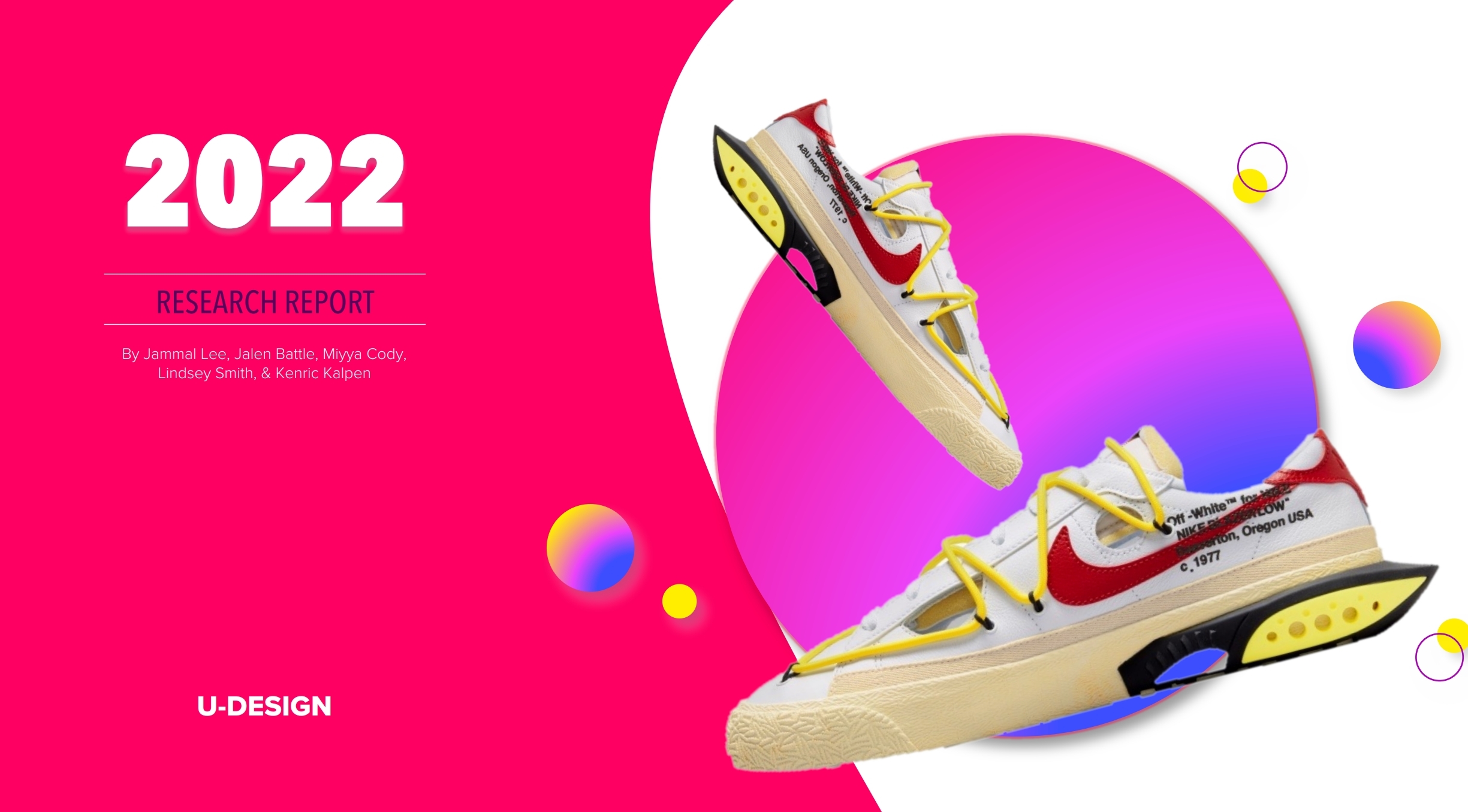UDesign - Show your sole
Role: Research, Wireframing, Interaction, UI
Duration: March 1st 2022 - May 2nd 2022
Approach: Goal-Directed Design
Tools: Figma
U-Design is a mobile app that allows users to customize, sell, and buy their own sneakers. It offers high-quality and name brand sneakers such as Nike and Vans to compliment a niche market of sneakerheads who have built trust with these brands.
Introduction
In this project, our team focused on creating a custom shoe app for creatives and Fashion designers. This project was completed within a 2-month span in IAD3000 Interaction Design. The team consisted of Jammal Lee (Team Leader), Lindsey Smith, Kenric Kalpen, Miyya Cody, & Myself.
While we met in person occasionally most of this project was collaborated and completed virtually. This project showcases my Knowledge and Skills in UX, UI, and visual design, but also highlights my knowledge and usage of the goal-directed design process.
Goal Directed Design
Goal-directed design is a detail on how to produce effective human-centered designs. Goal-directed design is based on the goals of the user. Goal-directed design can be broken down into 5 phases, Research, Modeling, Requirements, Frameworks, and Refinement. I will explain in each section how my team and I utilized goal-directed Design to create U-Design.
Research Phase
Before we kick things off here's a full extensive report of U-Designs's research.
The first step of Goal-directed design is the research phase. For this, our team began with a kickoff meeting. The kickoff meeting is where all teams of our project come together including stakeholders to discuss the problem at hand. In this case for our project this is what we first met our teammates and discuss general ideas for the app. For this project we also filled out a kickoff meeting questionnaire provided by a professor.
Literature Review
Next there's a lit review, I this includes any information that can be collected about the product domain. Everything from identifying what our target users are and information about them. Everything from web searches to industry reports, this is where we learned general information on the sneaker industry as a whole. In our group all team members took two topics 2 regarding the sneaker to research.
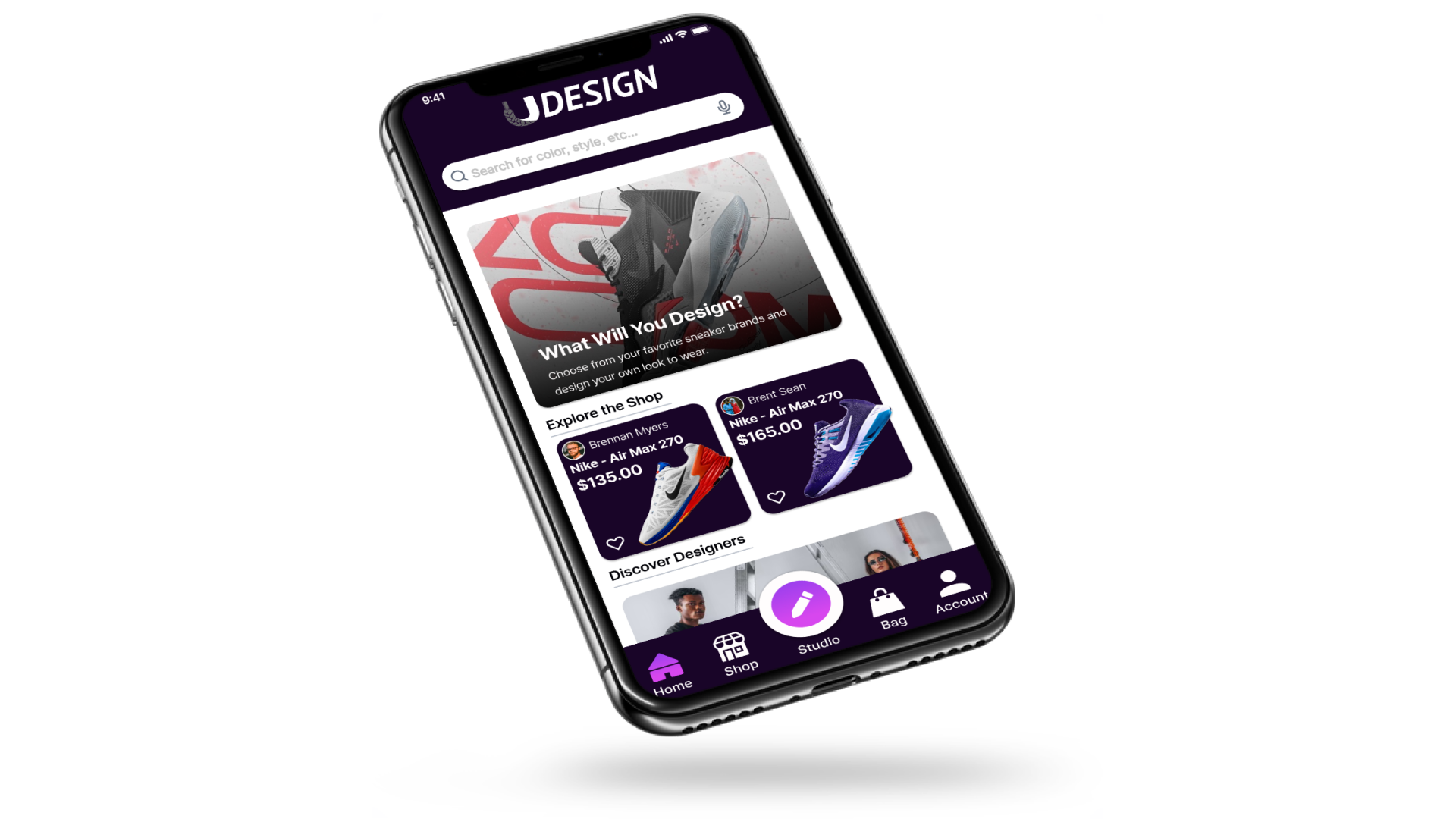
Competitive audit
The competitive audit is where we investigated potential competitors to our app. this included companies such as AliveShoes, Teespring, ShoeZero, and Kin Custom. the goal here was to see what their app does and what opportunities exist to create something new and unique. Its about what our app can do that other apps don't provide.
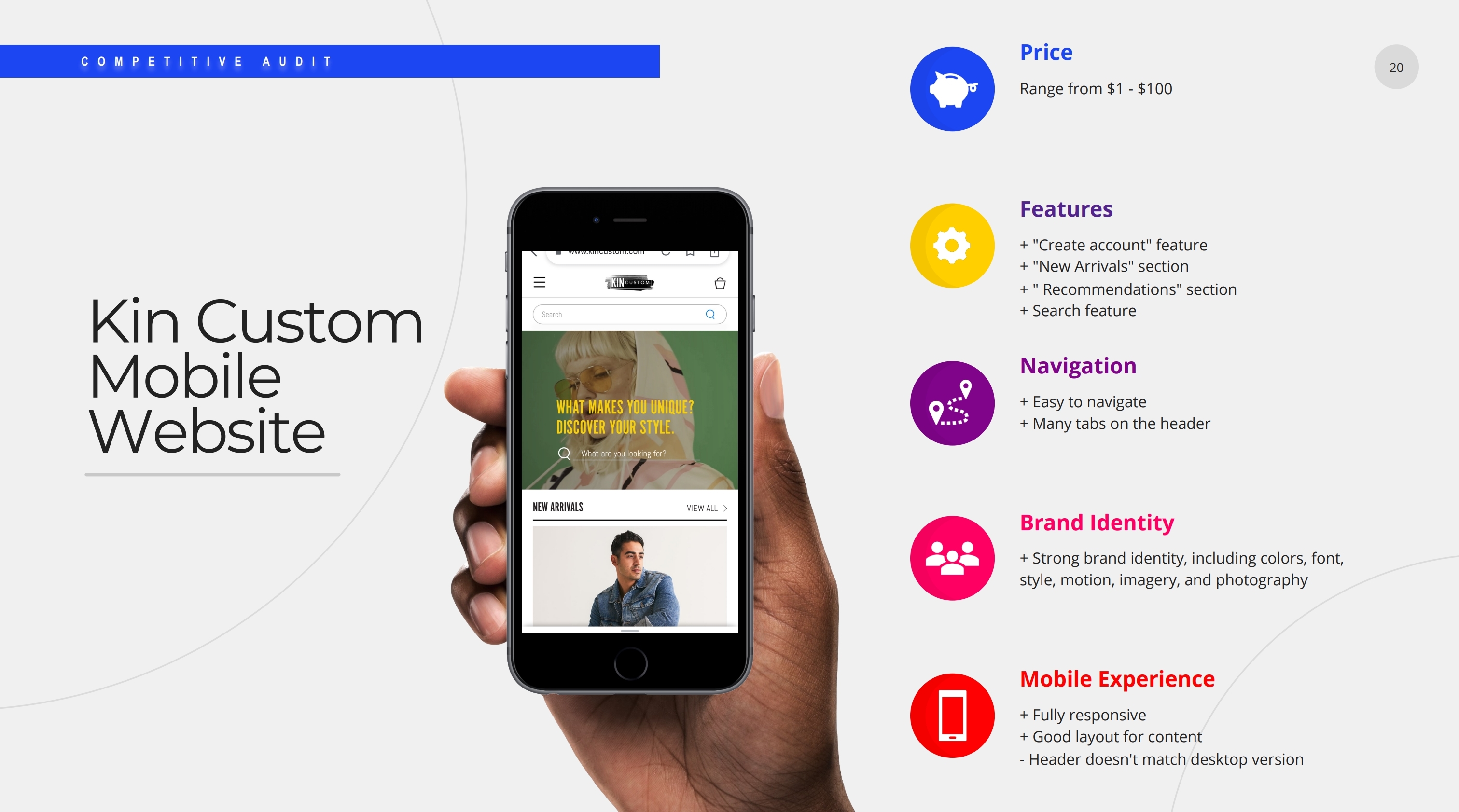
Stakeholder and SME interviews
Another key part of the research phase and goal directed design are the stakeholder interviews and Subject matter expert interviews. However for the scope of this class project we weren't required to do this and instead fill it out kickoff meeting worksheets at the beginning of the research phase instead. again this kickoff meeting worksheet ask questions from the point of view of a stakeholder to get us to look at our thinking from a different point of view.
User Interviews
User interviews were one of the most important parts of the research phase in my opinion. Right before interviewing however we created a persona hypothesis. Basically we used the information and knowledge from Our research to make a few assumptions on our user to create a whole questions to ask real people. Here we interviewed five potential users for our app.
Our prior research showed us that our target age group would be either Gen Z or millennials so we interviewed people in that age group that were interested in sneakers and got a lot of valuable information. Here we got two understand their biggest gripes and problems with current competitors and what they will want to see in a custom shoe application.
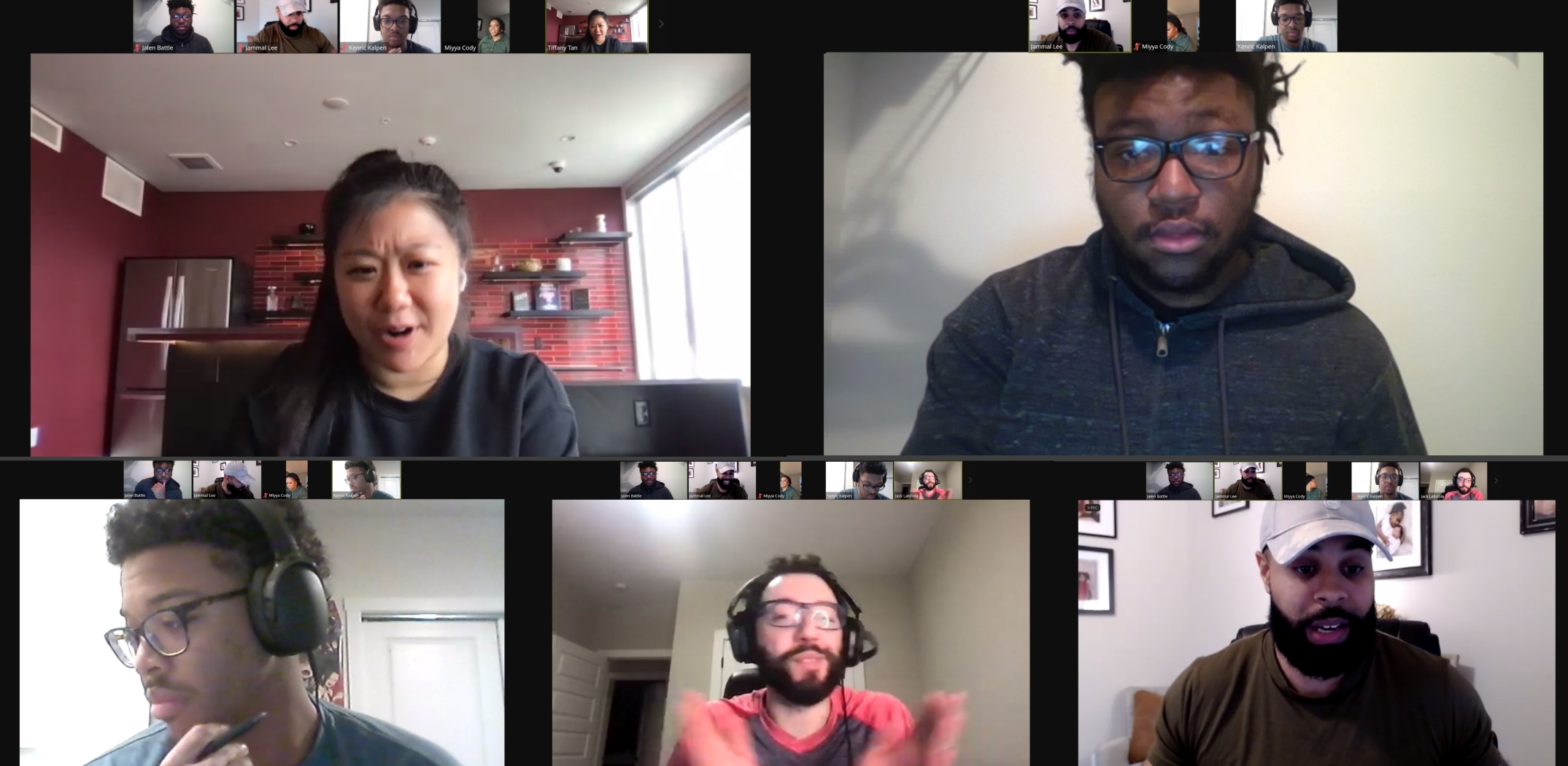
Affinity Maps

Modeling Phase
The end of the research phase begins the modeling phase. In this phase you have enough information and data to create a persona. Personas are archetypes based on the behavioral patterns we saw during the research phase. Personas are given names, demographic information, and goals based on the research we collected. they also get a narrative attached with them as well. Personas help designers simplify their test and ideas and help other teams Easily digest that said data. It's also something you can easily hand to a stakeholder to show who you are designing for. below are the personas our team created for the UDdesign app.
Personas
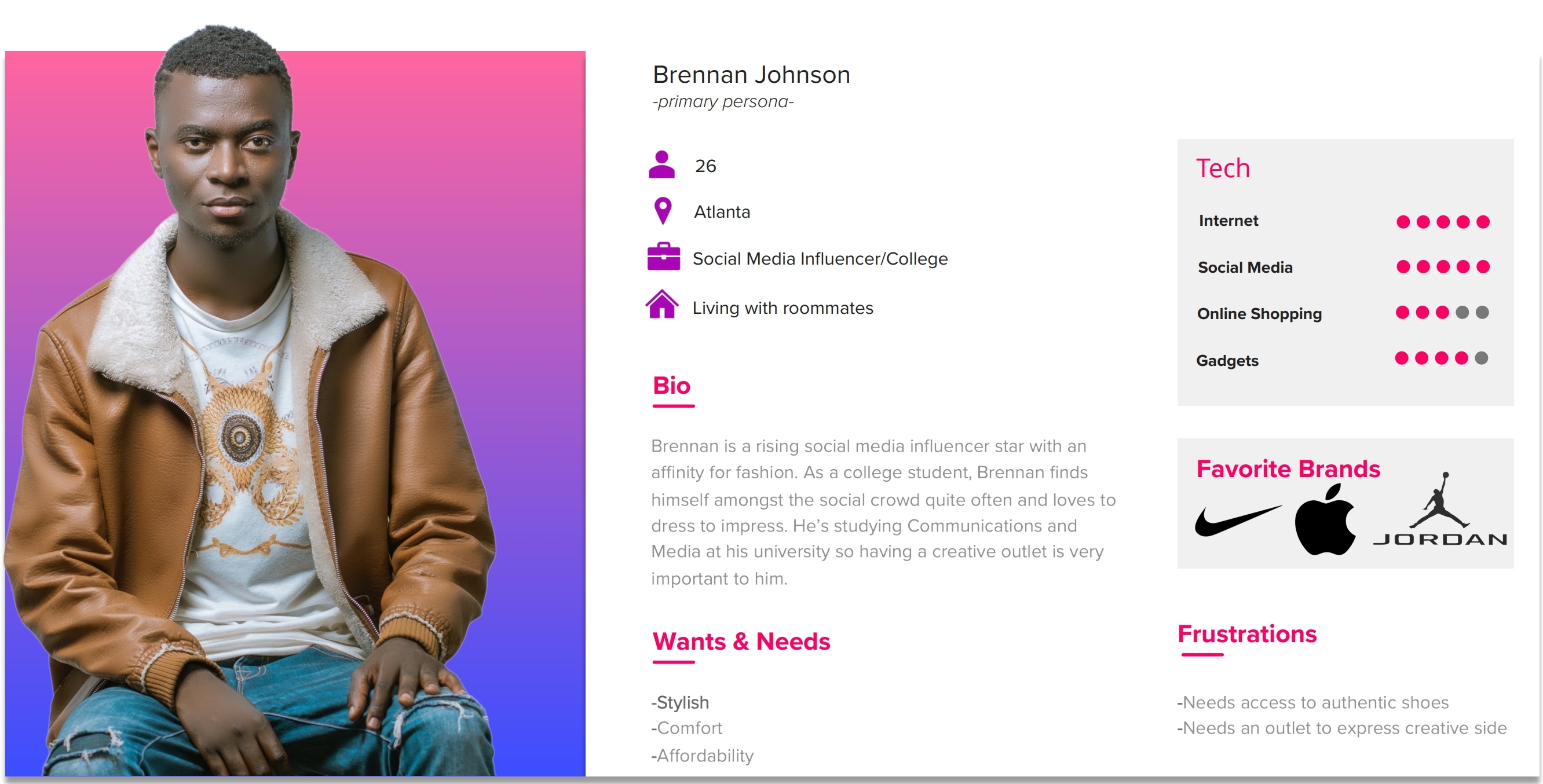
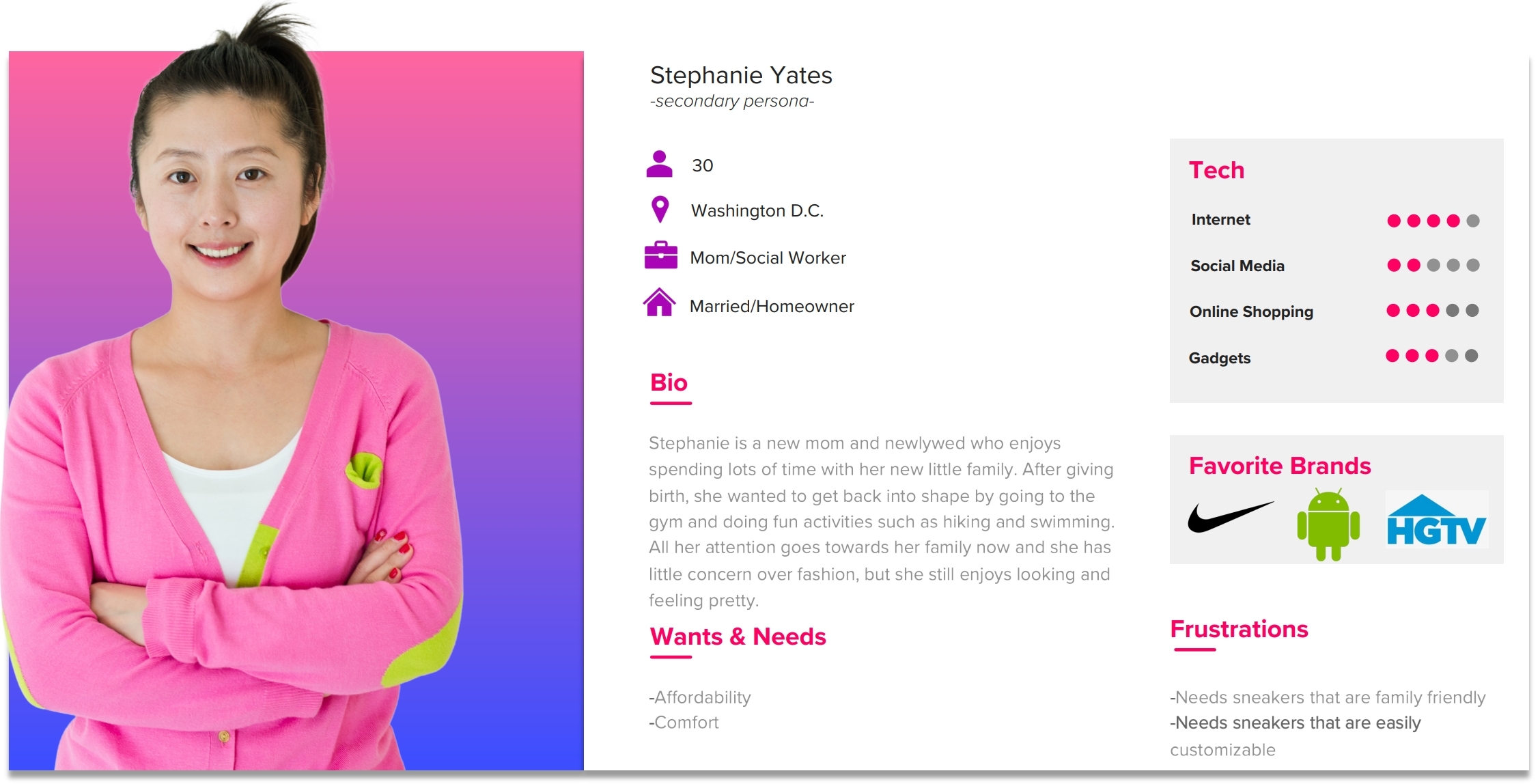
Context scenarios
Here we also created a contact scenario. Since we only had one primary persona we only made one contact scenario which was a fictional scenario that showcased our persona going through a storyline where they used our app to achieve their goals.
Requirements Phase
Next up is to requirements phase and this phase is as straightforward as it gets. Here our team wrote down the list of requirements for the app that our personas needed. Again these aren't necessarily features but more like concepts that will help our persona achieve their goals.
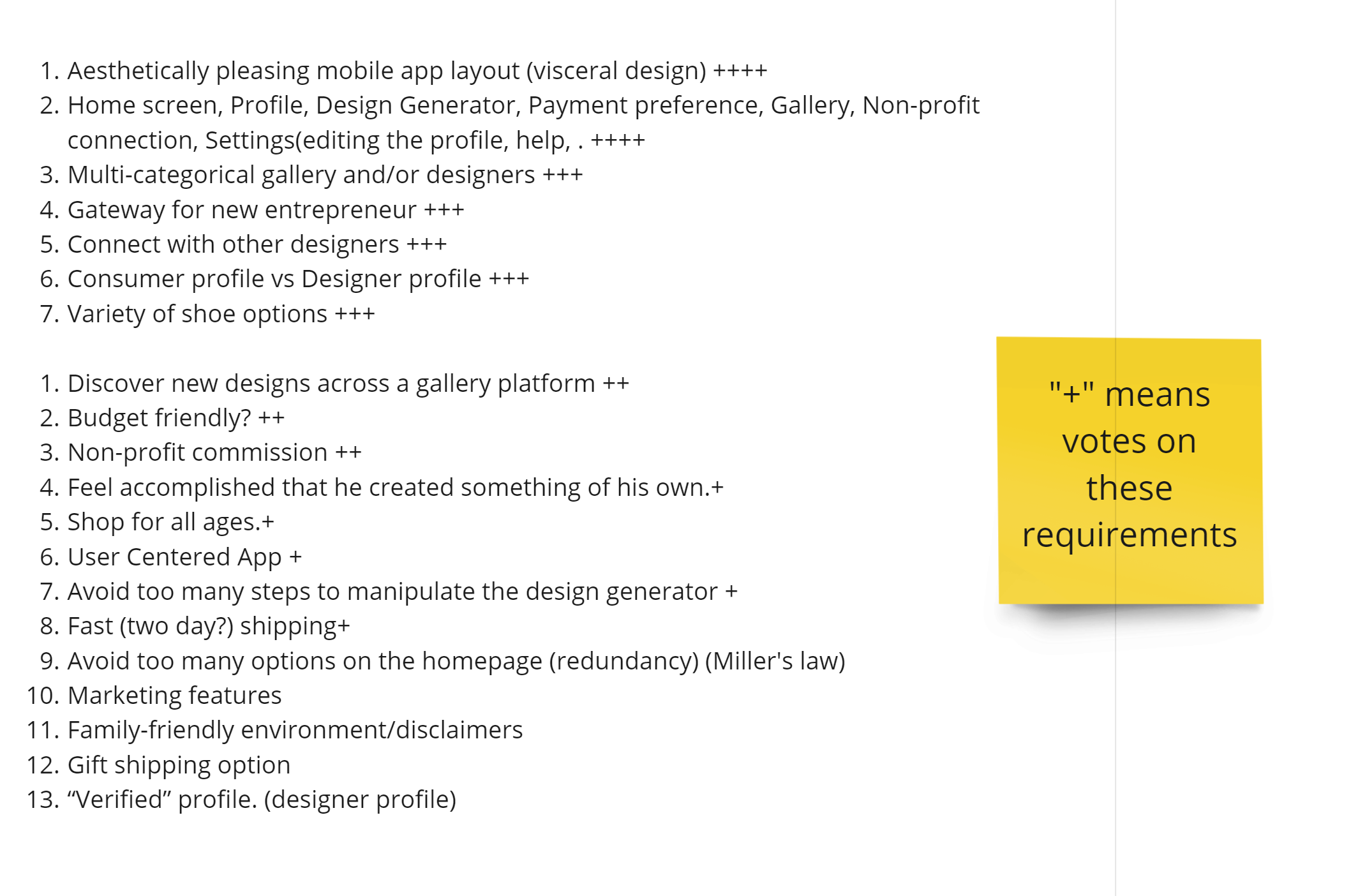
Frameworks Phase
One of my key roles in this project was using the data we had collected from the research phase and the set requirements to create wireframes. My teammate Kenric Kelpen and I created the overall skeleton and layout early app. This allowed our team to create some key path and validation scenarios. key path scenarios which are the most use past our persona will take throughout the app like the shop and shoe creator.
validation scenarios which are less use paths but still important like the profile screens. After our team got together too adjust a few things with the wireframes we took the best aspects from all of our models to create a finalized version that we would go on to use as a guideline for our prototypes.
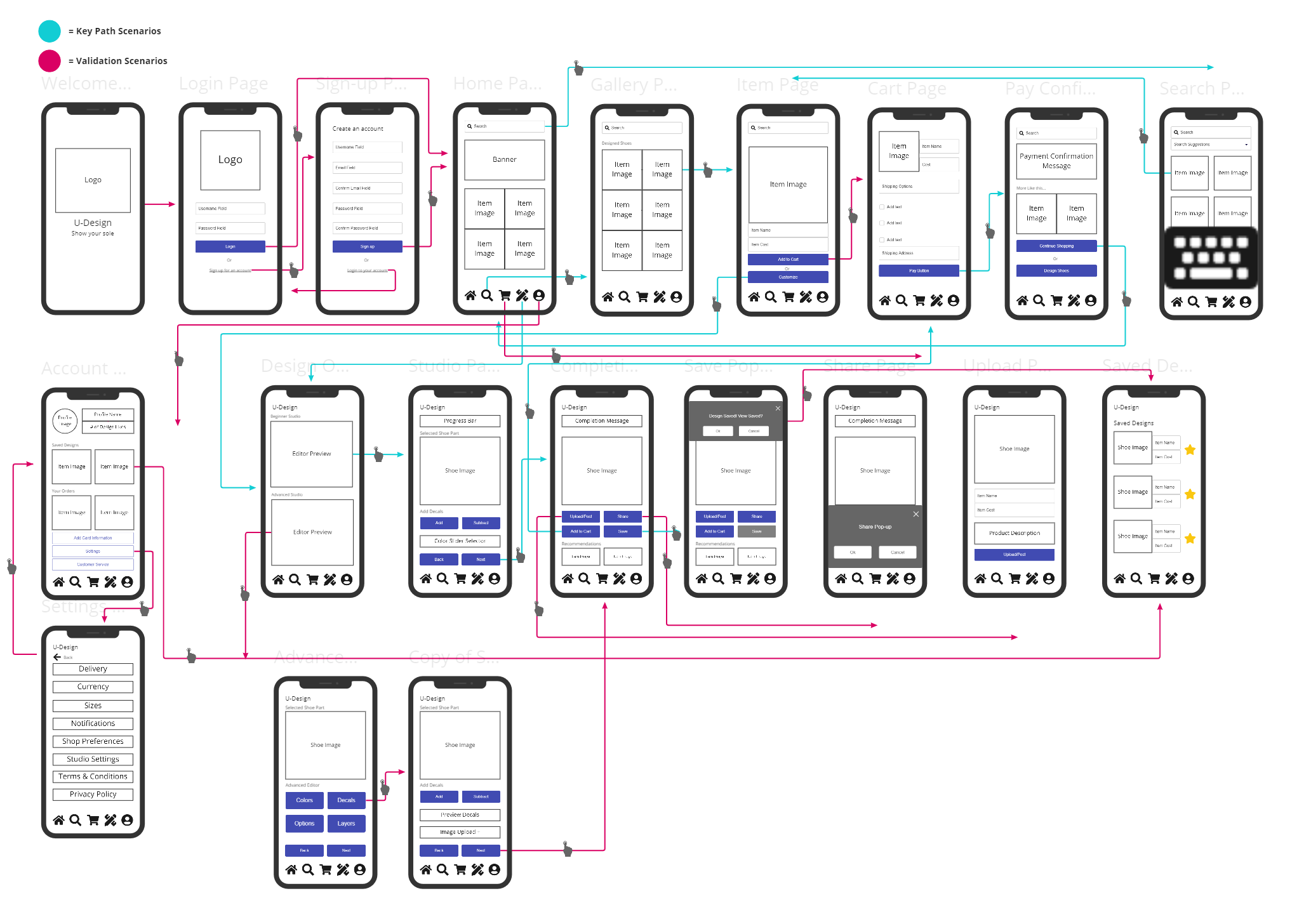
Refinement phase
Finally we get to the final phase of goal directed design the refinement phase. my team and I transitioned our low fidelity frameworks into high fidelity prototypes. This is where everything from the logo, colors, pictures where put together into a working prototype For users to test. After some feedback from our usability tests we were left with our completed prototypes.
Final Prototypes
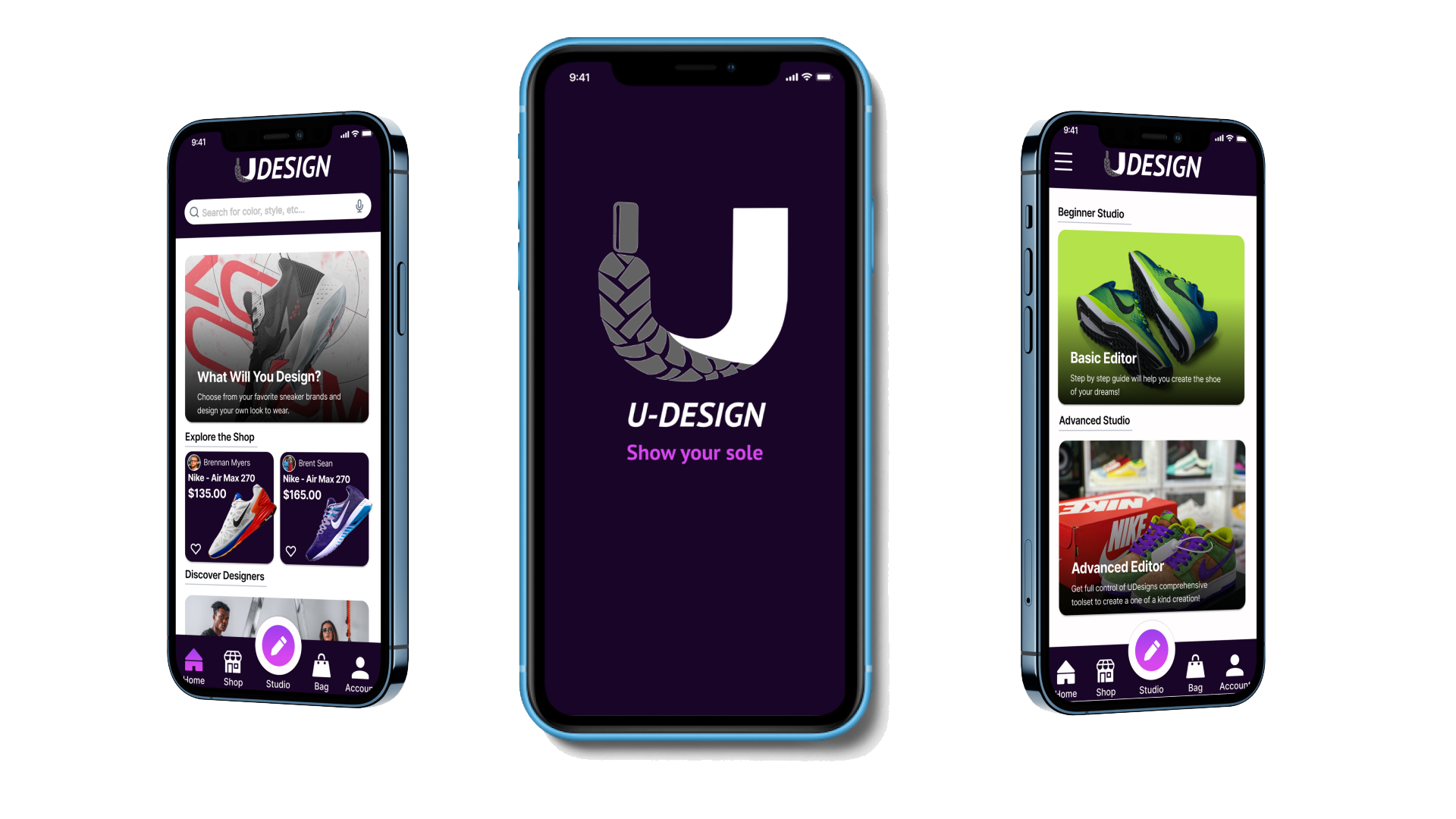
Conclusion
If there's something I would change or improve on for this project it would be Having a comfortable space for communication and meetings virtually Towards the end of the modeling phase and beginning of the framework phase aeroplane great to have assess style guide to go off of when creating high fidelity prototypes as it took quite a while to agree on a set style for our app.
key Takeaways
1. After working with a team going through the entire process of goal directed design I can see how goal based Designs benefit a business and the users
2. Human human-centered design and gold directed design are strong tools to use when creating a product.
3. When working with a team collaboration and communication is key. Being able to voice your ideas and opinions even when there are disagreements in a professional manner is a Invaluable skill.
4. Playing to everyone strengths from the start it's a great way to get the best from everyone on your team.
